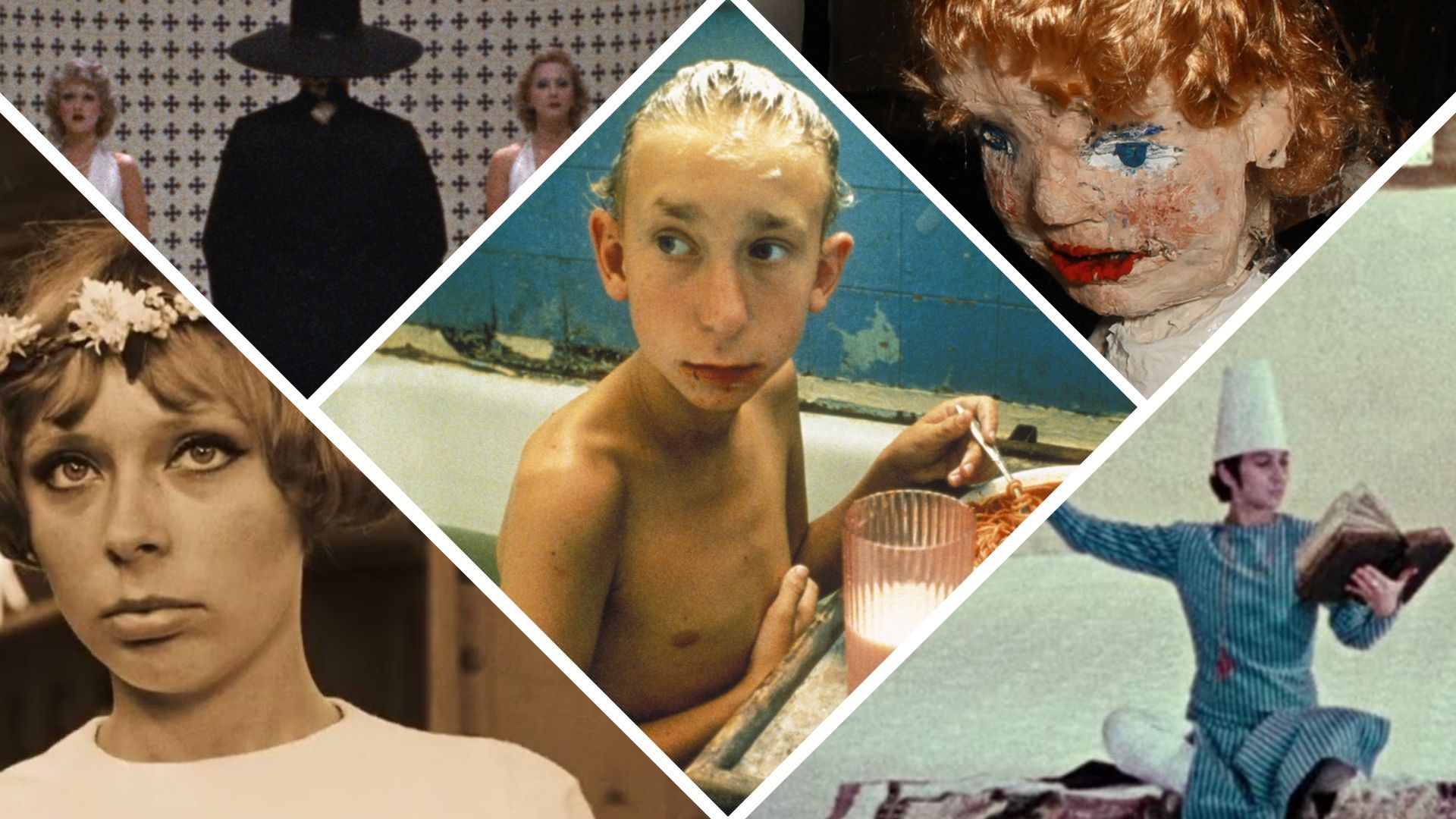Unveiling The Magic Of Movies Rules: Your Ultimate Guide To Cinematic Mastery
Hey there, movie buffs! Ever wondered what makes a film truly unforgettable? Today, we’re diving deep into the world of movies rules that filmmakers live and breathe by. Whether you're a casual viewer or an aspiring filmmaker, understanding these golden principles can transform how you experience cinema. So, grab your popcorn, and let's get this show on the road!
When we talk about movies rules, we're not just referring to technical guidelines. These rules encompass storytelling, visual aesthetics, and emotional connections. They’re the secret sauce that turns a simple screenplay into a cinematic masterpiece. Think of it like a recipe where every ingredient matters. From character development to lighting techniques, each element plays a crucial role.
Now, before we dive into the nitty-gritty, let’s set the stage. The film industry is a dynamic beast, constantly evolving with new technologies and shifting audience preferences. But at its core, the essence of movies rules remains unchanged. They guide creators in crafting stories that resonate across cultures and generations. So, buckle up, because we’re about to explore the magic behind the silver screen!
- Unveiling The World Of Uiiucom A Comprehensive Guide
- 9xmoviesin The Ultimate Guide To Understanding And Staying Safe Online
Understanding the Basics: What Are Movies Rules?
In the simplest terms, movies rules are the unwritten codes that filmmakers follow to ensure their work connects with audiences. These rules aren't rigid laws but rather guidelines that help maintain quality and coherence. They cover everything from scriptwriting to post-production. Think of them as the blueprint for creating impactful cinema.
Key Elements of Movies Rules
Let’s break down some of the foundational aspects of movies rules:
- Storytelling: A compelling narrative is the backbone of any great film. It’s what keeps viewers hooked from start to finish.
- Character Development: Audiences need to care about the characters. Whether they’re heroes or villains, well-rounded personalities make all the difference.
- Visual Aesthetics: From cinematography to set design, the visual elements contribute significantly to the overall experience.
- Sound Design: Music and sound effects can elevate a scene from ordinary to extraordinary. They add depth and emotion to the story.
The Role of Movies Rules in Filmmaking
So, why are movies rules so important? For starters, they provide a framework that helps filmmakers stay focused. Without these guiding principles, a film could easily lose its direction. Imagine watching a movie where the plot jumps around randomly or the characters behave inconsistently. Not a great experience, right?
- Exploring The World Of Blue Film Sexy A Comprehensive Guide
- Elie Honig Eye Injury The Untold Story Behind The Incident
Moreover, movies rules ensure that films appeal to a wide audience. They help creators strike a balance between creativity and commercial viability. By following these rules, filmmakers can craft stories that resonate with viewers on a personal level while also being entertaining.
Breaking Down the Script: The Blueprint of Movies Rules
The script is arguably the most crucial component of any film. It’s where the magic begins. A well-written script adheres to movies rules by incorporating strong dialogue, clear character arcs, and a coherent plot structure. Here’s how it works:
- Dialogue: Every line should serve a purpose, whether it’s advancing the plot or revealing something about the characters.
- Character Arcs: Characters should evolve throughout the story, facing challenges that test their limits and reveal their true nature.
- Plot Structure: A solid structure includes an engaging opening, a compelling middle, and a satisfying conclusion. Think of it as a three-act play.
Visual Storytelling: The Art of Movies Rules
Visual storytelling is another critical aspect of movies rules. It involves using imagery to convey emotions and ideas. This can be achieved through various techniques, such as lighting, camera angles, and color grading. Let’s take a closer look:
Lighting Techniques
Lighting can dramatically affect the mood of a scene. For instance, soft lighting might create a romantic atmosphere, while harsh lighting can evoke tension. Filmmakers use these techniques to guide the audience’s emotions.
Camera Angles
The angle at which a scene is shot can change its meaning entirely. A low-angle shot might make a character appear powerful, while a high-angle shot can make them seem vulnerable. These subtle nuances are part of the movies rules that filmmakers swear by.
The Importance of Sound in Movies Rules
Sound is often overlooked but plays a vital role in movies rules. It enhances the viewing experience by adding layers of depth and emotion. Here’s how:
- Music: A well-composed score can heighten the emotional impact of a scene. Think about iconic movie themes that stay with you long after the credits roll.
- Sound Effects: From the rustle of leaves to the roar of a dragon, sound effects bring the world of the film to life.
Character Development: Bringing Movies Rules to Life
One of the most engaging aspects of movies rules is character development. Audiences connect with films through the characters. When done right, these characters feel like real people with their own hopes, fears, and motivations. Here’s how filmmakers achieve this:
Building Relatable Characters
Relatable characters are key to a successful film. They should have flaws, strengths, and backstories that make them feel authentic. By following movies rules, filmmakers can create characters that audiences care about and root for.
Editing: The Final Piece of Movies Rules
Editing is where all the pieces come together. It’s the final stage of the filmmaking process and one of the most crucial. Editors use movies rules to ensure the film flows smoothly and maintains the intended tone. Here’s what that looks like:
- Pacing: The speed at which the story unfolds is crucial. Too slow, and you lose the audience’s attention. Too fast, and they might miss important details.
- Transitions: Smooth transitions between scenes help maintain continuity and keep the story cohesive.
The Evolution of Movies Rules Over Time
Movies rules have evolved significantly over the years. With advancements in technology and changes in audience expectations, filmmakers are constantly adapting. However, the core principles remain the same. Let’s explore some of these changes:
The Impact of Technology
Technology has revolutionized the film industry. From CGI to digital cameras, these innovations have expanded the possibilities for filmmakers. Yet, they still adhere to movies rules to ensure the final product resonates with viewers.
Breaking the Rules: When It Works
While movies rules are essential, sometimes breaking them can lead to something extraordinary. Think about films that defy conventional storytelling or challenge the status quo. These risks can pay off big time, resulting in groundbreaking works that change the industry forever.
Examples of Rule-Breaking Success
Take Quentin Tarantino’s films, for instance. He often bends or breaks movies rules to create unique, unforgettable experiences. His non-linear storytelling and unconventional dialogue have earned him a cult following.
Conclusion: Embrace the Magic of Movies Rules
There you have it, folks! The world of movies rules is vast and fascinating. By understanding and applying these principles, filmmakers can create films that captivate and inspire. Whether you’re a viewer or a creator, appreciating these rules can enhance your cinematic journey.
So, what’s next? Share your thoughts in the comments below. Did we miss any crucial movies rules? Or perhaps you have a favorite film that broke the rules and still succeeded. Let’s keep the conversation going! And don’t forget to explore more articles on our site for all things movie-related. Happy watching!
Table of Contents
- Understanding the Basics: What Are Movies Rules?
- The Role of Movies Rules in Filmmaking
- Breaking Down the Script: The Blueprint of Movies Rules
- Visual Storytelling: The Art of Movies Rules
- The Importance of Sound in Movies Rules
- Character Development: Bringing Movies Rules to Life
- Editing: The Final Piece of Movies Rules
- The Evolution of Movies Rules Over Time
- Breaking the Rules: When It Works
- Conclusion: Embrace the Magic of Movies Rules
Article Recommendations
- 5movierulz 2024 Download Your Ultimate Guide To Movie Streaming And Beyond
- Unlock The Secrets Of Fry99xom Your Ultimate Guide



Detail Author:
- Name : Mr. Joshua Grimes I
- Username : alec.kulas
- Email : lillian.cruickshank@simonis.com
- Birthdate : 1994-06-14
- Address : 8540 Botsford Valleys Apt. 221 Emardstad, NJ 87763-9977
- Phone : +1 (989) 362-4407
- Company : Eichmann Inc
- Job : Dental Laboratory Technician
- Bio : Consequatur quasi nobis voluptatem enim. Et dolorum corporis necessitatibus occaecati voluptatibus. Quisquam a ex explicabo et. Deleniti aut aut sunt cupiditate consequatur cupiditate fuga.
Socials
twitter:
- url : https://twitter.com/martinehagenes
- username : martinehagenes
- bio : Repellat aspernatur at non error vel minima voluptates. Adipisci numquam beatae dolores ut error. Eum odio ad ex pariatur saepe ducimus.
- followers : 1781
- following : 1585
linkedin:
- url : https://linkedin.com/in/martine_hagenes
- username : martine_hagenes
- bio : Unde nihil sit sequi et dolore dolor.
- followers : 3057
- following : 359
facebook:
- url : https://facebook.com/martine2666
- username : martine2666
- bio : Sint quasi accusamus laboriosam debitis natus quaerat.
- followers : 3883
- following : 91
instagram:
- url : https://instagram.com/martine.hagenes
- username : martine.hagenes
- bio : Magni dolorem a rerum odit perspiciatis. Voluptate quod explicabo nemo.
- followers : 3138
- following : 2571
tiktok:
- url : https://tiktok.com/@martine_hagenes
- username : martine_hagenes
- bio : Consectetur in dolorum expedita quis explicabo voluptates.
- followers : 4939
- following : 1020